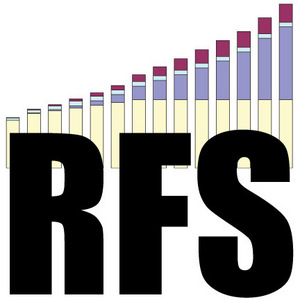Biofuel industry weighs in on final House RFS white paper

July 30, 2013
BY Erin Krueger
Representatives of the biofuels industry have weighed in on the fifth, and final, white paper on the renewable fuels standard (RFS) published by the House Energy & Commerce Committee, titled “Implementation Issues.”
Within the paper, the committee asked for stakeholder feedback on variety of issues, including whether the U.S. EPA’s annual process to set the volume requirements is effective, specifically in regard to cellulosic fuels. The committee also sought input on ways the renewable identification number (RIN) program could be improved and whether or not the RFS is incentivizing refiners to make less gasoline available to the U.S. market.
In its response, the Biotechnology Industry Organization stressed the RFS has been successful in driving the commercialization of advanced biofuel technologies. “The RFS provides exactly the type of long-term regulatory stability needed to send a signal to investors to develop a biofuels industry that lessens our dependence on foreign fuels and creates jobs in America,” said Brent Erickson, executive vice president of BIO’s Industrial & Environmental Section.
Advertisement
Advertisement
Within its comments, BIO said the cellulosic biofuel provisions of the RFS are working well, and several facilities are currently poised to begin production of next-generation fuels. The organization also pointed to the possibility that regulatory uncertainty is contributing to speculative RIN trading, driving up prices.
Brian Jennings, executive vice president of the American Coalition for Ethanol, also submitted comments, stating that RIN prices have risen this year because oil companies don’t want to comply with the RFS. “RIN prices have increased in 2013 because certain obligated parties (i.e. oil companies) have chosen not to comply with the RFS by purchasing and blending additional ethanol (which costs approximately 70 cents per gallon less than gasoline on the wholesale market today) for E15 or E85 consumption. In other words, while oil companies were reluctantly comfortable with 10 percent ethanol in all gasoline, they prefer to control the remaining 90 percent of the gasoline market by preventing the sale of E15 and other mid-and-high level blends of ethanol called for under the RFS,” Jennings said in his comments. “That oil companies are willing to pay $1 or more for a RIN, just to avoid buying ethanol at 70 cents per gallon less than gasoline and offering consumers safe, tested, and affordable blends such as E15 and E85, should tell Congress everything it needs to know about the RFS: the RFS is needed now, more than ever.
The Renewable Fuels Association touted the flexibility of the RFS in its comments. “The annual RVO-setting process is effective and allows EPA to adjust the required volumes of cellulosic and advanced biofuel annually based on the best available data of production capacity. No statutory changes are needed,” said Bob Dinneen, president and CEO of the RFA.
Advertisement
Advertisement
In his comments, Dinneen also stressed the fact that high RIN prices have been caused primarily by the refusal of most obligated parties to blend and market gasoline blends containing more than 10 percent ethanol. “Potential future increases in compliance costs can absolutely be avoided—if an obligated party increases its use of renewable fuels, it simultaneously decreases its need to purchase detached RINs,” he continued.
Growth Energy also weighed in on the white paper, noting that EPA’s 2013 proposed volume requirement for cellulosic fuels was based on real market conditions along with significant input from the USDA and U.S. DOE. “We are just three years removed from the finalized RFS2 regulations – thus, labeling cellulosic biofuels as ‘phantom fuels’ does a significant disservice to hardworking Americans who have made substantial financial commitments, and invested their time and effort into helping move our nation’s fuel supply away from an overreliance on foreign oil,” said Growth Energy CEO Tom Buis in his comments.
With regard to RIN prices, Buis also pointed to the refusal of the oil industry to offer higher biofuels blends to consumers. “The easiest way to bring down RIN prices and reduce compliance costs is to increase market access for higher blends of biofuels,” he said.
Related Stories
The IRS on July 21 published a notice announcing the 2025 calendar-year inflation adjustment factor for the Section 45Z clen fuel production credit. The resulting adjustment boosts maximum the value of the credit by approximately 6%.
The U.S. Senate on July 23 voted 48 to 47 to confirm the appointment of Aaron Szabo to serve as assistant administrator of the U.S. EPA’s Office of Air and Radiation. Biofuel groups are congratulating him on his appointment.
U.S. Secretary of Agriculture Brooke L. Rollins today announced the reorganization of the USDA, refocusing its core operations to better align with its founding mission of supporting American farming, ranching, and forestry.
The U.S. Department of Energy’s Office of Energy Efficiency and Renewable Energy is soliciting public comments on a preliminary plan for determining provisional emissions rates (PER) for the purposes of the 45Z clean fuel production credit.
A new study published by the ABFA finds that the U.S. EPA’s proposal to cut the RIN by 50% for fuels made from foreign feedstocks, as part of its 2026 and 2027 RVOs, could stall the growth of the biomass-based diesel (BBD) industry.
Upcoming Events










